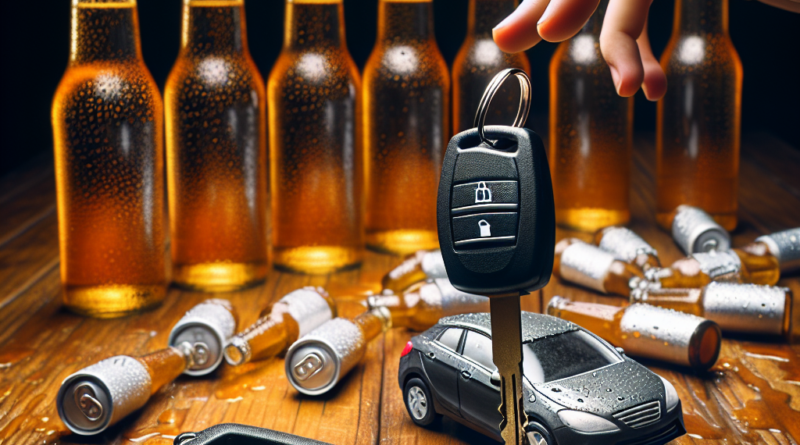How Many Beers Can You Drink Before Driving?
Driving and Alcohol Consumption: Know the Limits
When you get behind the wheel, you must be sure to be in the best possible condition to do so: that’s why, after consuming alcoholic beverages, such as one or more beers, it would be appropriate to let other people drive.
Alcohol consumption inhibits the central nervous system, slowing down both cognitive and motor functions.
Drinking alcohol therefore prolongs reaction times, increasing the risk of accidents.
Alcohol Levels and Penalties
According to the Highway Code, the limit beyond which a sanction is triggered for driving under the influence of alcohol is 0.5 g/liter.
Specifically, for driving under the influence, the driver loses 10 points on their license, in addition to other sanctions commensurate with the level of alcohol detected in the blood.
Details include:
– From 0.5 g/l to 0.8 g/l: fine from 532 to 2,127 euros; license suspension from 3 to 6 months.
– From 0.8 g/l to 1.5 g/l: fine from 800 to 3,200 euros; up to 6 months in prison; license suspension from 6 months to one year.
– Above 1.5 g/l: fine from 1,500 to 6,000 euros; prison from 6 months to 1 year; license suspension from 1 to 2 years; vehicle seizure and confiscation (unless the vehicle belongs to someone unrelated to the offense).
If the legal limit is violated on more than one occasion within a two-year period, the driver’s license is automatically revoked.
Further penalties are expected with the upcoming Highway Code reform, which, for example, sets the limit to zero (no alcohol in the blood) for those already sanctioned for driving under the influence of alcohol.
How Many Beers Can You Have Before Driving?
The limit to keep under observation is 0.5 g/liter.
But is it possible to get an idea of when you are at risk of exceeding it based on what and how much you have drunk? Yes, even though there is no definite answer.
Blood alcohol levels depend not only on what has been consumed but also on the individual’s physique.
Some people metabolize alcohol faster than others due to an enzyme, alcohol dehydrogenase, produced by the liver, which breaks down alcohol molecules before they enter the bloodstream.
The production of this enzyme varies: for example, men usually produce more of it than women.
The Ministry of Health has created a table that provides an approximate indication of when the limit is considered exceeded.
Considered a 330 ml beer, the table includes the following values:
Given the calculated blood alcohol levels based on gender, body weight, and whether one is on an empty or full stomach – which are indicative and refer to consumption within the previous 60-100 minutes – we can get an idea of how many beers can be consumed without risking being penalized.
Usually, one beer, preferably not a double malt, is always permitted, especially on a full stomach.
In some cases, men with a full stomach and a weight over 75 kg may even have two beers, or even three when low-alcohol beers are consumed.




